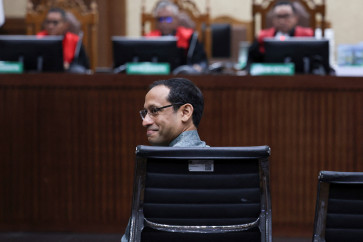Popular Reads
Top Results
Can't find what you're looking for?
View all search resultsPopular Reads
Top Results
Can't find what you're looking for?
View all search resultsAJI pushes media to pay more attention to minority groups
Change text size
Gift Premium Articles
to Anyone
Mass media must put more focus on issues pertaining to minority groups to help them voice their aspirations.
Alliance of Independent Journalists (AJI) chairman Suwarjono said it was important for the media to read between the lines with regard to issues surrounding minority groups, especially those related to religion, ethnicity and race.
"The media must help give a voice to the minority groups in fighting for their rights. Journalists need to take a stand," he said in a press statement on Sunday.
Media outlets were paying more attention to ratings and page views rather than seeking a solution to the conditions faced by minority groups, Suwarjono added.
It is also important for the media to question the state’s role in protecting minority groups such as in the cases of the Shiites in Sampang, Madura, as well as the Ahmadis and Fajar Nusantara Movement (Gafatar).
Questions pertaining to the ownership of group assets and whether the state is providing protection should be raised, Darmawan Triwibowo, executive director of NGO the Tifa Foundation, said.
AJI and the Tifa Foundation held a on Sunday a discussion on the roles of the media that affect public discourse on discrimination and minority groups rights violations.
He also regretted the media's position as an observer, only reporting the news when events occurred.
"The media has the right to demand the state to take responsibility for their negligence," he said in a statement.
AJI Indonesia conducted research on media outlets in reporting conflicts by following news coverage of conflicts involving Gafatar and the Shia.
"The most reports came in the first three days, up to a week after the conflicts took place. When blood and tears are shed," Y. Hesthi Murthi, head of the female and marginalized group division at AJI, said in a statement.
Most reports came in the first month but showed a declining trend. In the following month, reports on the Shia and Gaftar showed a significant decrease, Hesthi said.
Based on the samples, surabaya.tribunnews,com reported 145 news items on the Sampang Shiites from Aug 27 to Sep 27, 2012, with a decline to only one report from Sep 28 to Oct 27, 2012. Meanwhile, tempo.co reported 168 news in the same first period, with a decline to 11 in the following month.
"That showed a drastic decline despite the ongoing case," she added.
Meanwhile, Sajogyo Institute executive director Eko Cahyono said that conflicts involving minority groups were strongly linked to the control of natural resources. He cited cases in Paneai in Nabire, Papua; Cisitu in Lebak, Banten; Cek Bocek in West Nusa Tenggara and Malind in Merauke, Papua.
The institute's research found that corporations used various methods to gain control over an areas' natural resources. Religious issues are often used to distract from the real purpose of gaining over the natural resources, he said. (rin)










